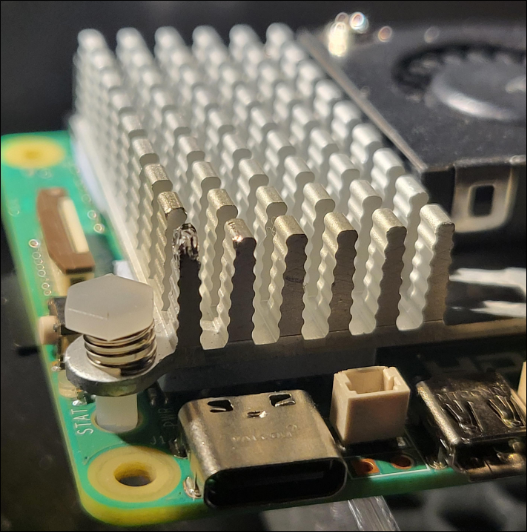A heatsink works by increasing surface area to dissipate heat through convection (air moving past it) and radiation (infrared energy). The key principle is:
Heat dissipation ≈ Surface Area × Temperature Difference × Heat Transfer Coefficient
but, for me, math is hard, so..
Why You Can Cut Fins Off (Usually)
- Diminishing Returns: Each fin you add provides less cooling benefit than the previous one because:
- Inner fins get less airflow (they’re shielded by outer fins)
- Heat has to conduct through more material to reach outer fins
- The temperature gradient decreases as you move away from the heat source
- The Rough Rule: A heatsink typically operates with 30-50% margin. So if it’s rated for 5W and your RPi CPU draws 3W, you have room to lose some fins.
- Fin Efficiency: There’s actually a mathematical concept called “fin efficiency” - fins that are too long or too closely spaced become ineffective. The last row of fins might only contribute 10-15% of total cooling.
Napkin Math Example
Say you have a heatsink with 8 fins:
- First 4 fins: ~60% of cooling
- Next 2 fins: ~25% of cooling
- Last 2 fins: ~15% of cooling
Cutting off one row (2 fins) loses maybe 10-12% of cooling capacity. If your CPU was running at 65°C with the full heatsink, it might now run at 68-70°C - usually fine since RPi CPUs throttle around 80-85°C.
When You Can’t Cut Fins
- If the heatsink was already barely adequate
- If you’re overclocking
- If ambient temps are already high
- If there’s no airflow
The real question to ask: “What’s my current CPU temp under load?” If it’s 60°C, cut away. If it’s 78°C, maybe find a different heatsink.

